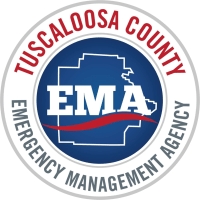
Common Tornado Myths
February 8, 2023
True or False? Tornado Myths Debunked
Misconceptions and myths about tornadoes have been around for a long time. Get under an overpass, open all the windows in your house, tornadoes don't strike the same place twice. There are a number of myths that have come about over the last 150 years. Some of these myths are almost as old as tornado research itself, while at least one came about as recently as the early 1990s. Many of these beliefs are based off inaccurate scientific assumptions or exceptional events. This article will attempt to debunk some of those myths so that readers may practice safer plans for tornadoes.
One of the first big myths about tornadoes is the belief that opening the windows in your home can help mitigate damage done to the structure during a tornado. The general idea behind this is that opening the windows will allow the atmospheric pressure inside the house to equalize faster with the pressure of the tornado. There are a number of reasons why this sort of thinking is inaccurate. The vast majority of damage caused by tornadoes comes from wind and debris. Any windows on an average house would be broken long before pressure had any sort of effect. Houses are not air tight structures. The pressure would equalize inside the house long before the window are broken. Time spent opening windows during the approach of a tornado is time that could be used to seek safe refuge.
Another inaccurate and potentially dangerous myth is one that involves sheltering in the southwest corner of a house or basement. Tornadoes in the Southeastern United States tend to travel in a path that trends from the southwest to the northeast. The idea behind this myth is that the tornado will pass over a building, pushing any debris away from the southwest and into the northeast corner. While tornadoes tend to trend from SW to NE the wind within them is traveling in all directions. The safest location is in a small, windowless room in or near the center of a house.
In 1991, a television crew in Kansas took shelter from a tornado under a highway overpass. The event was highly publicized as the crew had kept their camera running during the event. This resulted in the spreading of the idea of going under an overpass to survive a tornado. In reality, those that took shelter under the overpass survived due to their proximity to the tornado as well as the overpass's unique design. The storm's path shifted in the last few minutes and the tornado passed by them. During a 1999 tornado outbreak in Oklahoma one tornado passed over three different overpasses, causing a fatality and severe injuries at each of those locations. The building structure of overpasses make them a poor choice for sheltering as the elevated ground exposes people to higher wind speeds. You may survive but it is not the ideal cover some believe it to be. Vehicles left on the road can also hinder emergency response vehicles.
Many people believe that tornadoes cannot strike the same place twice. Tornadoes can actually strike anywhere. From 1916 to 1918, the community of Codell, Kansas was hit by three tornadoes, all on May 20 of each year. The belief that you will be safe from tornadoes if your area has already been hit by one before is dangerous because people might become complacent or lulled into a false sense of security.
The last myth of this article is the belief that tornadoes are stopped by water. In 1840, Natchez, Miss. was hit by a massive tornado resulting in the deaths of over 300 people. This tornado traveled along the Mississippi River, primarily causing the deaths of people riding in flatboats. The tornado was not stopped by the water of the river. Tornadoes that originate on land can also move onto a body of water and become tornadic waterspouts. This phenomena has been witnessed on rivers and lakes.
One of the primary ways to increase public safety during tornadoes is by helping to dispel these myths. Education is a key factor when it comes to weather safety and knowing what is fact and what is myth could make the difference between life and death.
To learn the truth about taking shelter in a tornado CLICK HERE.
